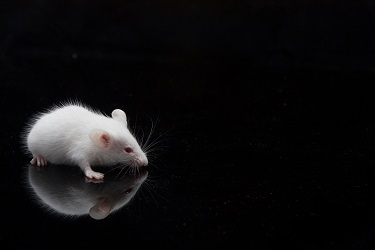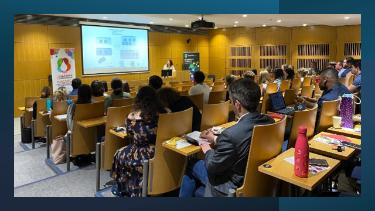Working in systems biology: how I reconciled my first love of mathematics with my experience in biology

Even thought systems biology is a very popular field of research nowadays, it is very rare to find institutes that will work both on the wet side and the dry side of systems biology. It is even more rare to find researchers trained and experienced to do both. I am one of the few “hybrids” working both in the lab and on the computer. Even if it is challenging to keep up with two scientific communities that have their own languages and habits, it is also very rewarding to be able to see the two sides of the coin. But first I would like to explain how I arrived there.
In order to explain why I am so passionate about mathematical modelling of biological processes, I have to start from my childhood. I was raised to be curious and logical. I remember spending hours in the garden studying all the plants and insects. I also remember that when I started to do maths at school, I would spend days hounding my parents to give me equations to solve. Equipped with these two passions, my love of nature and biology, and my love of mathematics, I wondered which I would eventually choose to study? I became a little inventor, creating new tools using my imagination and adding science to my inventions, and therefore assumed I was destined to become an engineer in biotechnology.
For my Master’s research internship, I worked for a young and innovative start up based in Cambridge. While it was at the end of its technology-building phase, I contributed to their Nature Biotechnology article: “Complete humanization of the mouse immunoglobulin loci enables efficient therapeutic antibody discovery”, (PMID:24633243). However, when I graduated and started to work, I quickly realised that being an engineer in large scale industry was very technical and I missed biology. When I moved to Ireland, I was fortunate to receive an Irish Research Council grant so that I could go back to university to pursue doctoral research in October 2015. Here, my initial project was entirely lab based and I still felt that it was not exactly what I wanted to do.
As part of my PhD requirement, I followed a module entitled Systems Biology and this is when I discovered that there was a way for me to combine my love of mathematics and my expertise in biology. I then requested to change projects to join Systems Biology Ireland. My current PhD subject is “Mathematical modelling of pathway interactions and activation dynamics to predict cell responses to chemotherapeutic treatments in breast cancer cells”. It merges both the mathematics that I missed so much when working only in the lab and the biology that I missed as an engineer. My chosen project was tailor-made for me, but it also answered a greater need within cancer research - to bring personalised medicine to the patient.
Breast cancer is the most common cancer among women affecting about 1 in 8 women during their lifetimes and, in most cases, the treatment is surgery combined with chemotherapy that unfortunately works only for 25 to 50 percent of the patients. This shows a need to predict the patient’s response to the treatment to prescribe the right one! Fitting in systems biology research strategy, my PhD project combined both wet lab and dry lab research to try to predict cell response to chemotherapy treatment with a mathematical model. My model of pathway interaction explained the mechanism of drug-induced cell death and by extending my model to different types of cells and drugs treatment, I hope to predict treatment response of other breast cancer cell lines, and ultimately patients, to develop a personalised treatment strategy.
Being both an experimentalist in the lab and a modeler is very challenging because it requires working between several communities that operate differently. For example, often at conferences a statistician will ask a question differently than a mathematician or a computational researcher or a biologist, which can lead to confusion when answering. Furthermore, it is very difficult to stay up to date in both areas.. However, my profile of ‘hybrid’ allows me to understand both sides of the research strategy and the challenges we face. Very often in computational biology meetings, people come to me and ask me which dataset I used for my study. When I tell them that I used my own experimental data to build my mathematical model, they are usually very impressed that I did both the lab experiments and the modelling. This makes me proud to be an ‘hybrid’ systems biologist.
About the Author
Laura’s current research focuses on analysing network interactions between stress and DNA-damage response pathways in Breast Cancer. Laura worked on the development of human antibodies in Kymab (Cambridge, UK) before graduating with a Masters degree of Engineering from the National School of Engineering in Biology Techniques of Bordeaux (ENSTBB). She then worked as a bioproduction engineer in Merck Serono (Switzerland) and studied glycans associated to commercial drugs in NIBRT (Dublin).

